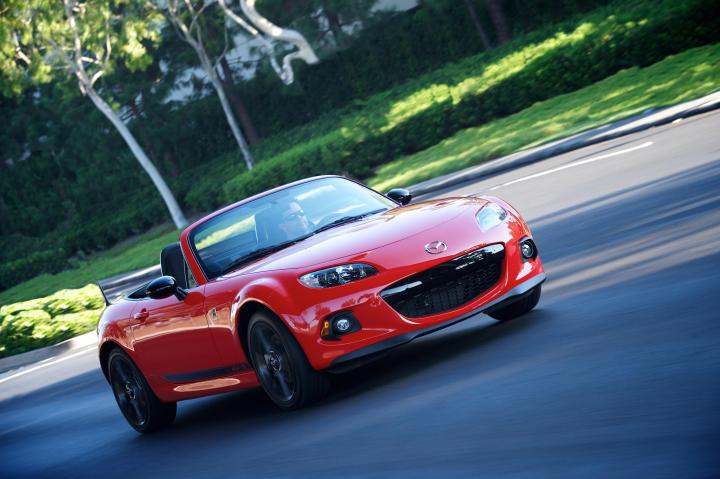
The Mazda MX-5 Miata has been a desirable sports car for 25 years now, and the Japanese automaker is celebrating its iconic roadster with a little 25th anniversary shindig.
Since the MX-5 has been so good to Mazda, the little Miata is now getting a complete revamp. The rear-drive platform is completely redesigned utilizing Mazda’s new SkyActiv-G engine technology. Specific changes have been made to the chassis and body to comply with Mazda’s new exterior design language.
However, the biggest change will be the new 1.5-liter naturally-aspirated SkyActiv-G power plant. This new engine was recently launched in the Mazda3 and produces 99 horsepower and 111 pound-feet of torque. These are some pretty modest numbers, but not the kind I would expect to find in the mighty Miata. A 2.0-liter SkyActiv-G engine will also be launched with new platform, according to Autocar. Likely, the 1.5-liter won’t be offered Stateside, as it’ll be too underpowered for lead-footed Americans.
The new MX-5 goes on sale in 2015, which also happens to be the 25th anniversary. Mazda is still up in the air on viability of a new compact roadster. By my approximation, the new design looks like it will be a huge success, and a car that embodies engineering principles and emphasizes handling should sell itself.
Hopefully, the new gas-saving technology will not hinder the mechanical perfection expected of the next-gen MX-5. Mazda knows what works, and every automotive enthusiast expects only the best from its enthralling sports car.


